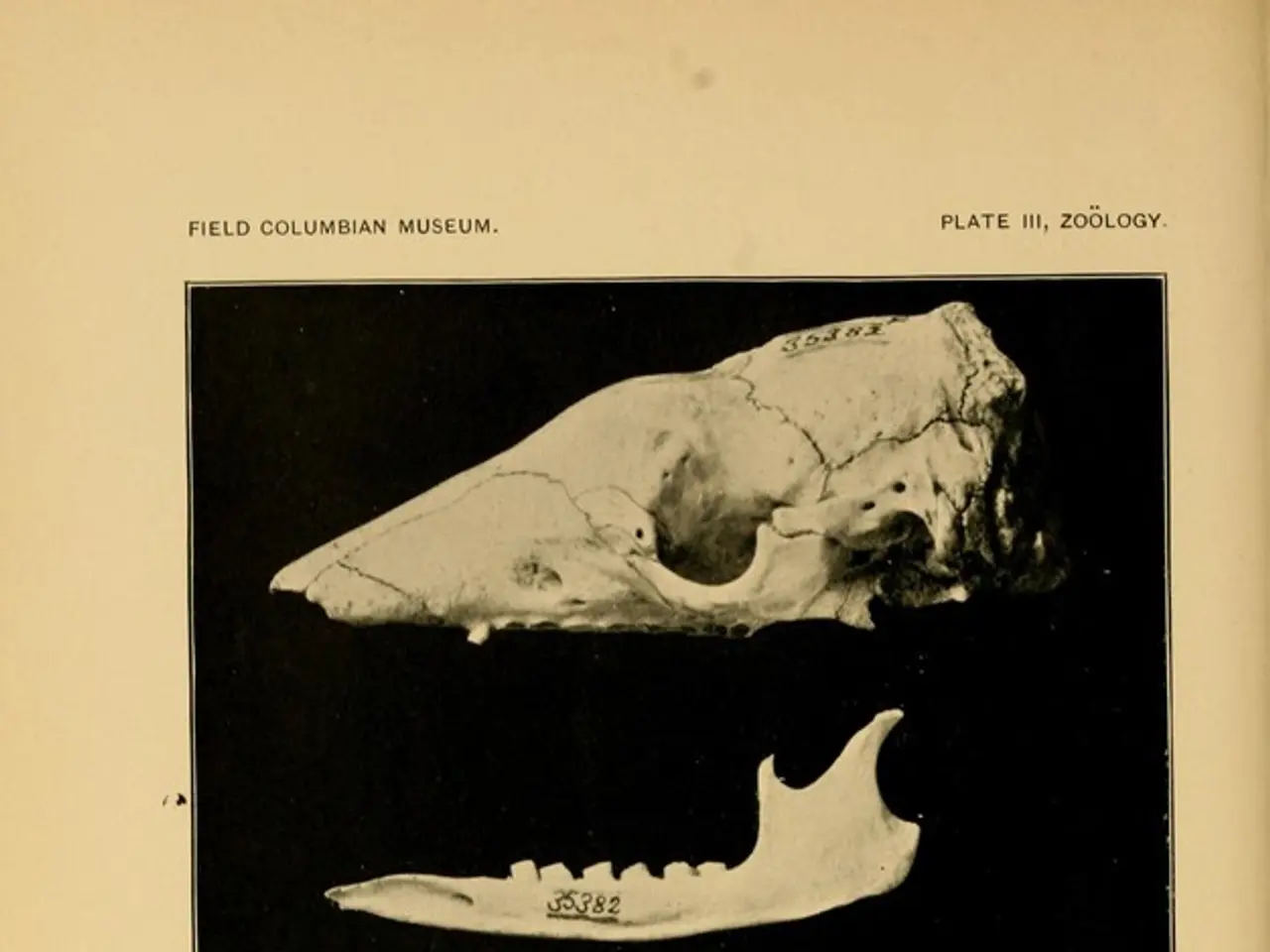Bone Density Testing: An Examination of Bone Strength and Its Purpose
Bone density tests are crucial tools in diagnosing and monitoring conditions related to bone health, such as osteoporosis and osteopenia. Here's a breakdown of the most common bone density testing methods and their unique benefits and limitations.
Dual Energy X-ray Absorptiometry (DXA)
Considered the gold standard for bone mineral density (BMD) assessment, DXA provides highly accurate and repeatable measurements at clinically relevant sites such as the lumbar spine and total body less head (TBLH). However, DXA results can be affected by confounding factors like osteoarthritis, scoliosis, and vertebral osteophytes, which may inaccurately raise BMD values. It's worth noting that DXA provides limited information on bone quality and microarchitecture.
Peripheral DXA (pDXA)
Offering a simpler, more portable option for peripheral sites (e.g., forearm, heel), pDXA can be useful for screening or in settings where central DXA is unavailable. However, peripheral measurements do not always reflect central skeletal sites and may have lower predictive value for fracture risk.
Quantitative Computed Tomography (QCT)
QCT measures volumetric BMD and can differentiate between trabecular and cortical bone, providing detailed information on bone geometry and microarchitecture. It's important to note that QCT has a higher radiation dose, is more expensive, less widely available, and less standardized than DXA. It's mainly used in research or specialized clinical cases.
Peripheral QCT (pQCT)
Like QCT but applied to peripheral sites, pQCT is useful for assessing cortical and trabecular bone separately at sites like the radius or tibia. Its limitations are similar to QCT, with limited availability and peripheral site measurements that may not fully represent axial skeleton fracture risk.
Quantitative Ultrasound (QUS)
QUS is radiation-free, portable, cost-effective, and safe for repeated measurements. It measures parameters such as speed of sound (SOS) and broadband ultrasound attenuation (BUA), which relate to bone quality. However, QUS only assesses peripheral sites (heel, phalanges), is less standardized, and shows moderate correlation with DXA BMD. It's not generally used for definitive diagnosis but can screen for fracture risk.
In summary, DXA remains the clinical standard due to its accuracy and extensive validation for predicting fracture risk. QCT offers detailed structural information but is less accessible. Peripheral methods (pDXA, pQCT, QUS) are convenient for screening but have limitations in representing axial bone status. The selection of the method depends on clinical purpose, patient population, resource availability, and the need for detailed bone quality assessment.
Low bone density can occur due to various factors, including illnesses, medications, and increasing age. The Z-score, which is the difference between a person's bone mineral density and the average bone mineral density for healthy people of the same age, ethnicity, and sex, is a crucial tool in diagnosing low bone density. A T-score of -2.5 or lower may indicate osteoporosis, while a Z-score of -2.0 or less suggests low bone mineral density.
Adult humans have 206 bones, essential for movement, protecting essential organs, and storing minerals. Certain lifestyle changes, such as quitting smoking, avoiding alcohol, eating a calcium-rich diet, taking vitamin D supplements, and exercising regularly, can help improve bone density. It's important to note that the risk of broken bones increases by 1.5 to 2 times with each 1-point drop in the T-score.
[1] Kannan, K., & Riggs, B. L. (2002). Bone densitometry in clinical practice. The New England Journal of Medicine, 347(16), 1306-1316. [2] Riggs, B. L., Melton, L. J., & Kannan, K. (2008). Clinical densitometry: a position development conference of the International Society for Clinical Densitometry. Journal of clinical densitometry, 11(suppl 1), S1-S38. [3] Johnell, O., & Oden, A. (2002). The WHO definition of osteoporosis. Calcified tissue international, 70(5), 279-281. [4] Riggs, B. L., Melton, L. J., & Kannan, K. (2013). Clinical densitometry: a position development conference of the International Society for Clinical Densitometry. Journal of clinical densitometry, 16(suppl 1), S1-S37.
- Bone density tests, such as Dual Energy X-ray Absorptiometry (DXA), Peripheral DXA (pDXA), Quantitative Computed Tomography (QCT), Peripheral QCT (pQCT), and Quantitative Ultrasound (QUS), are crucial tools for diagnosing and monitoring health-and-wellness conditions related to bone health, such as osteoporosis and osteopenia.
- DXA, considered the gold standard for bone mineral density assessment, offers highly accurate measurements, but its results can be affected by medical-conditions like osteoarthritis, scoliosis, and vertebral osteophytes, potentially raising BMD values inaccurately and providing limited information on bone quality and microarchitecture.
- Quantitative Computed Tomography (QCT) provides detailed information on bone geometry and microarchitecture, but it has a higher radiation dose, is more expensive, less widely available, and less standardized than DXA, and it's mainly used in research or specialized clinical cases.
- Lifestyle changes, such as quitting smoking, avoiding alcohol, eating a calcium-rich diet, taking vitamin D supplements, and exercising regularly, can help reduce the risk of osteoporosis, a medical-condition characterized by low bone density and a higher susceptibility to fractures.




